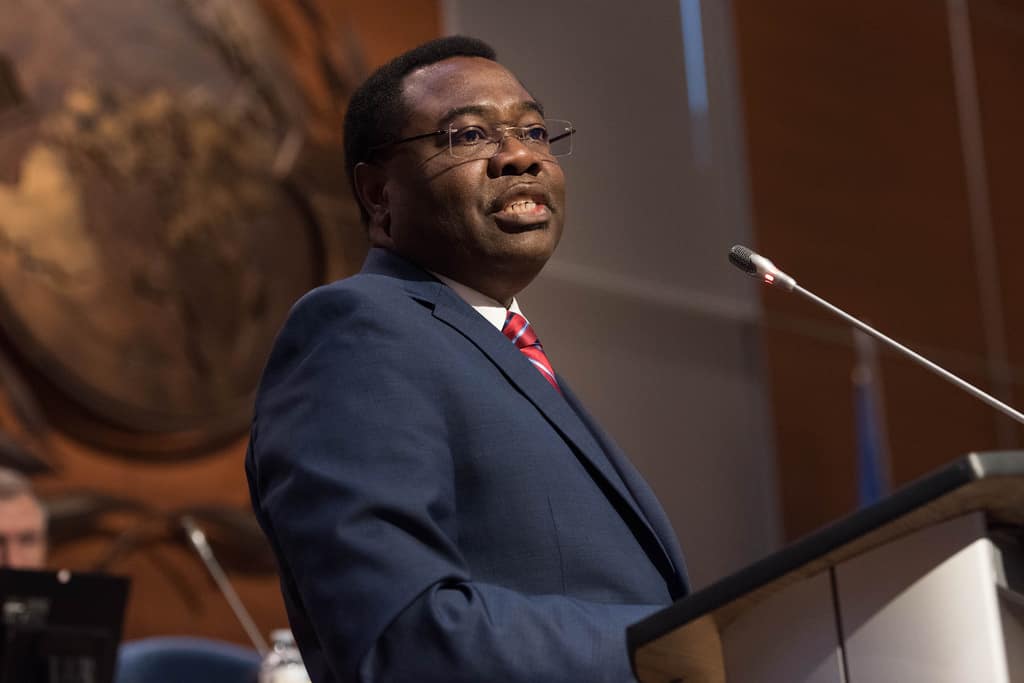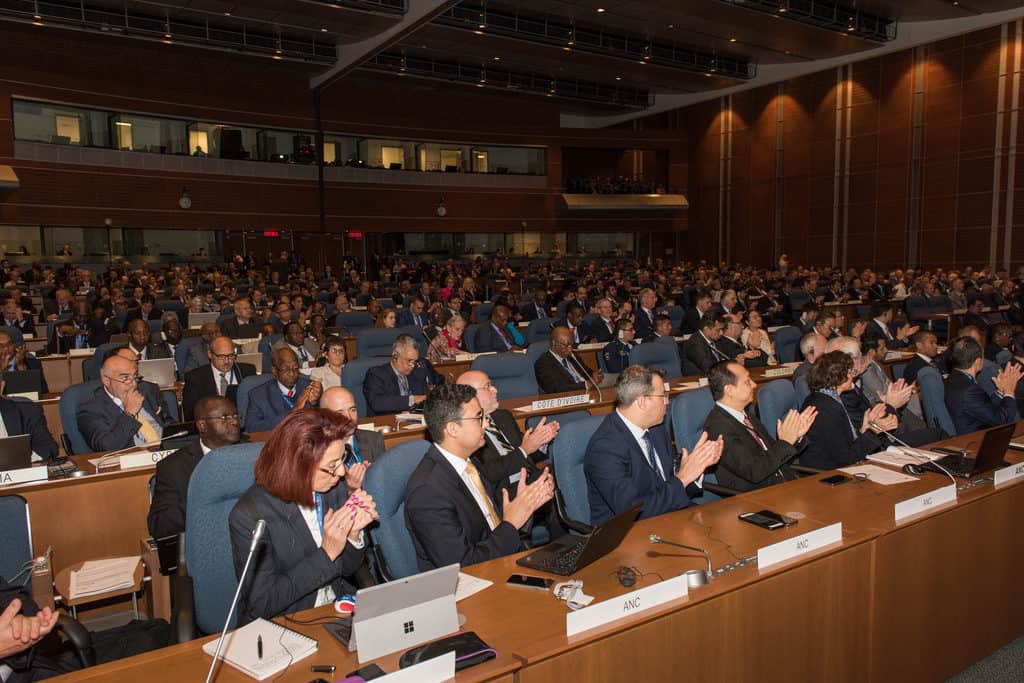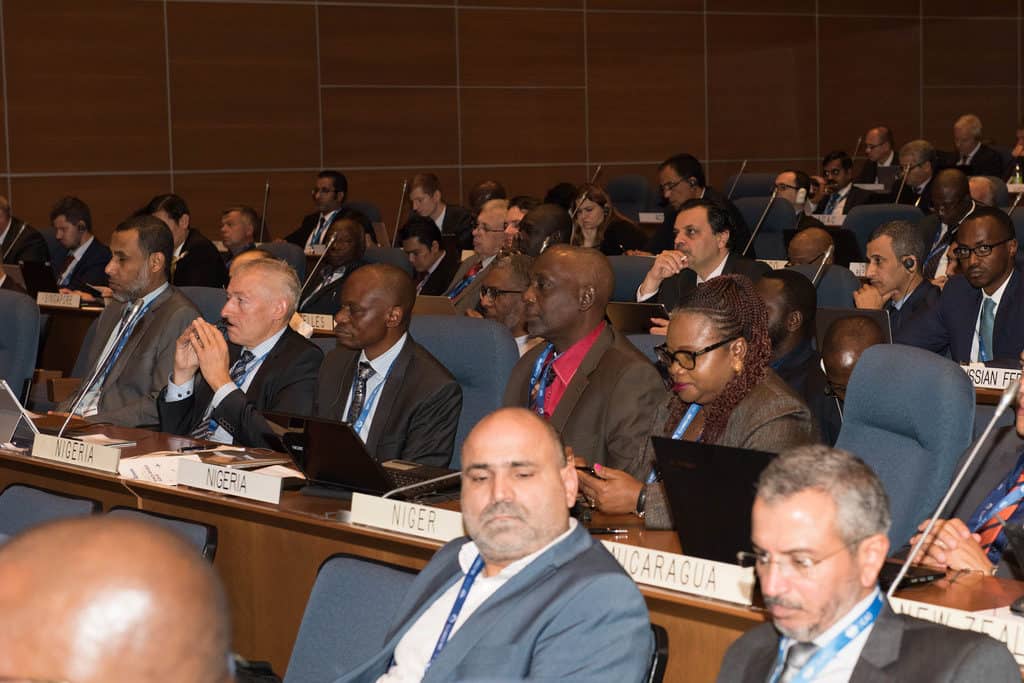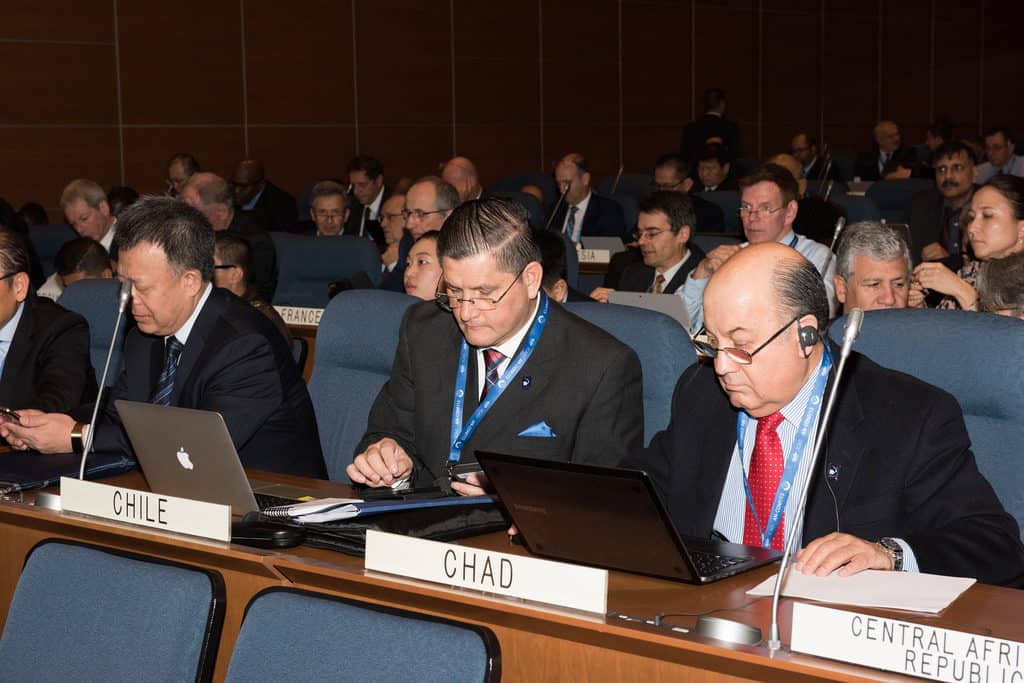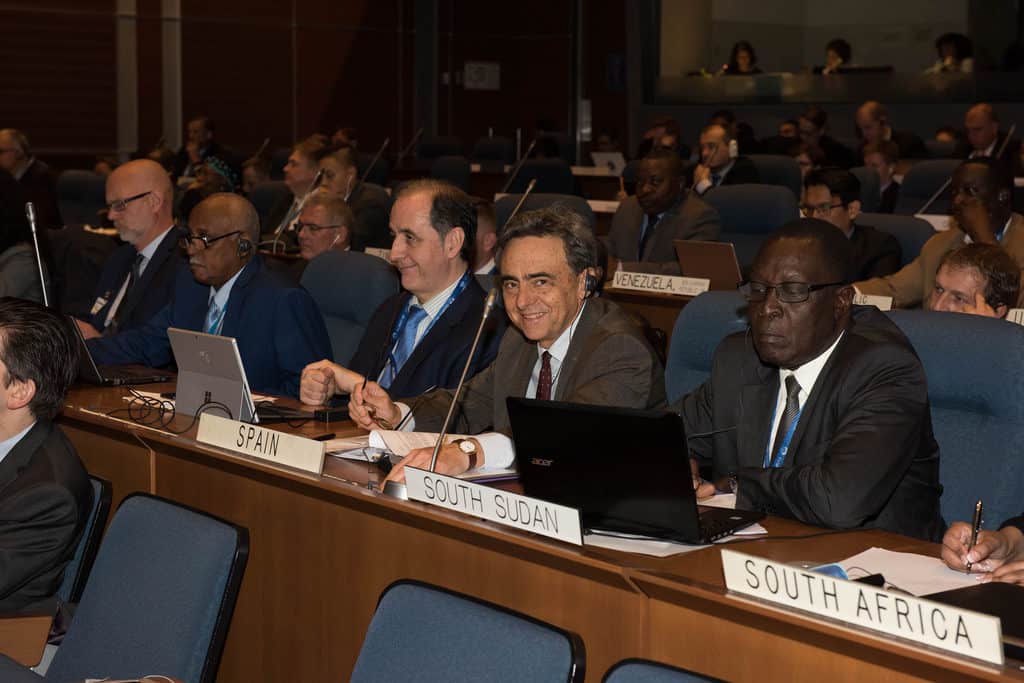International experts representing a wide range of disciplines came together at the International Civil Aviation Organization (ICAO) in Montréal, for the ten-day long 13th Air Navigation Conference held earlier this month.
The event plays a pivotal role in how governments and industry will collaborate internationally to adjust to emerging aviation challenges and technologies, a point which was clearly underscored by ICAO Council President Dr. Olumuyiwa Benard Aliu in his keynote conference remarks.
“Aviation today is on the brink of some major transformations,” the President declared. “This is reflected in the fantastic growth in aircraft passenger and cargo traffic volumes that are poised to more than double by 2035, the increasing deployment of drone technology, the launch of autonomous, suborbital, and supersonic activities, as well as other innovations such as artificial intelligence and block chain technologies.”
“Accordingly,” he commented, “our goal for the next two weeks is to define our collective vision of a safe, interoperable, seamless and global civil air traffic management system for the 21st century.”
 Stressing that civil aviation stakeholders had been edging towards a future air navigation system for several decades, the ICAO President noted that the “future is now” in terms of air traffic management and operations being adapted to meet the expectations of modern societies and consumers, and that ICAO has given the sector what it needs to evolve.
Stressing that civil aviation stakeholders had been edging towards a future air navigation system for several decades, the ICAO President noted that the “future is now” in terms of air traffic management and operations being adapted to meet the expectations of modern societies and consumers, and that ICAO has given the sector what it needs to evolve.
“Through our upgraded and consensus-based targets and objectives set-out in our Global Plans for Safety and Air Navigation, ICAO has provided the tools you need to accelerate this transition,” he highlighted.
The 13th Air Navigation Conference also heard from ICAO Secretary General Dr. Fang Liu during the Plenary session, where she drew attention to the fact that the immensity of the event’s technical challenges can often obscure how its participants’ decisions can truly transform people’s lives and the prosperity of nations.
“You will be delving into a range of topics during this event which pertain to many recent air transport innovations, and it’s important to recognize how the emergence of new entrants continues to enhance and expand the socio-economic value of aviation,” Dr. Liu commented. “It is much more efficient for you, and for our sector in general, to coordinate and collaborate here than patchwork solutions which can vary from state-to-state or region-to region.”
“It is critical that ICAO sets out a global agenda which is as practical as it is visionary and which will make the best use of all available resources” Dr. Liu highlighted.
The participants in ICAO’s 13th Air Navigation Conference reviewed a wide range of items including revised policies and targets for the ICAO Global Aviation Safety Plan, new business case tools relating to infrastructure modernization projects and other revisions to the ICAO Global Air Navigation Plan, State endorsement of an International Trust Framework to bolster the security of future digital air transport requirements, and a new global approach to cost-effective safety collaboration.
All of these deliberations benefited from advance symposia where industry operators were able to provide advice and inputs leading to pragmatic final recommendations to be assessed by the Conference.
President Aliu concluded his opening remarks by recognizing that the ICAO Council had made a series of recommendations at its 2018 off-site strategy meeting on how ICAO can better lead aviation in responding dynamically and effectively to the exponential changes occurring now and in the decades to come, noting its focus on the commercial space sector. He stressed as well the Council’s sector-wide call to invest in and develop the next generation aviation professionals who will be needed to operate and lead a modernized air transport system in the years ahead.
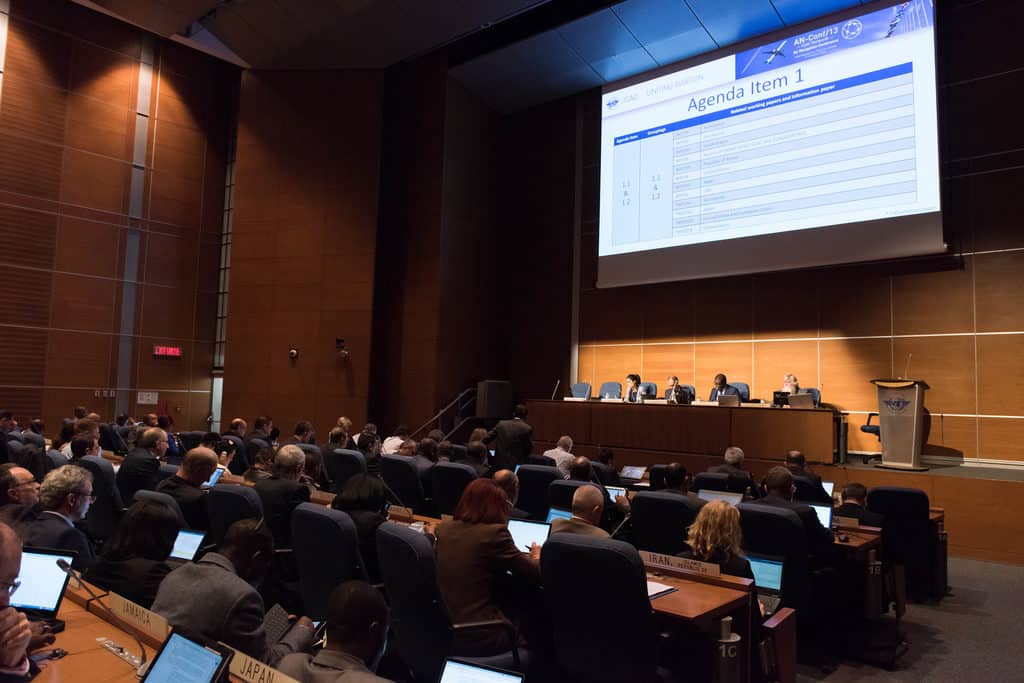 Dr. Aliu also took part in a special ceremony where seven of the 14 States eligible for ICAO Council President Certificates for noteworthy safety oversight progress last year were called to the stage and presented with their accolades personally.
Dr. Aliu also took part in a special ceremony where seven of the 14 States eligible for ICAO Council President Certificates for noteworthy safety oversight progress last year were called to the stage and presented with their accolades personally.
The 13th ICAO Air Navigation Conference was held from 9-19 October and hosted over 1,100 participants from 116 ICAO Member States and 32 international organizations.
We recorded the live discussions on all of the Agenda Items as they occurred. These sessions were spread out over the ten-days of the event, so you catch up on the discussions you missed here: for the recorded sessions on the Air Navigation Committee’s discussions, click here. To watch the recorded sessions on the Safety Committee‘s discussions, click here. To watch our SKYTALKS presentations, click here. To view the Final Report Discussions and Closing Plenary, click here.

